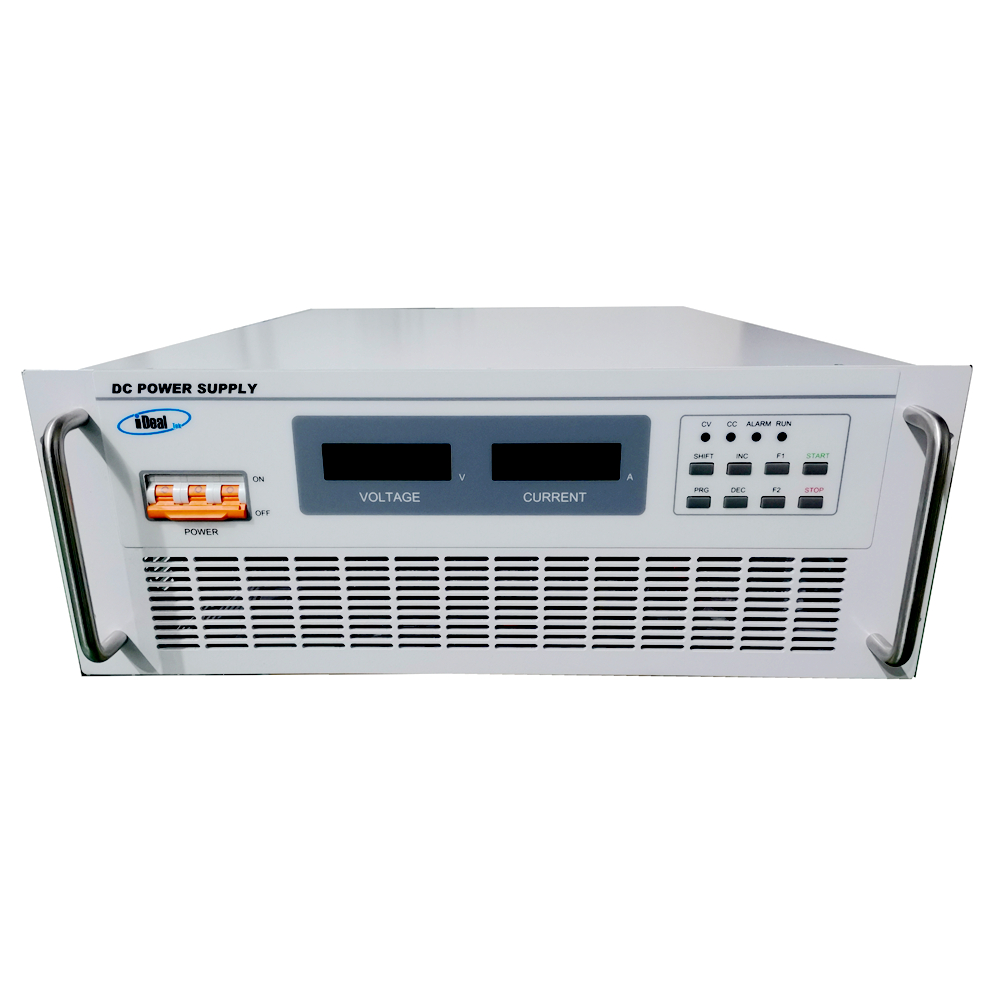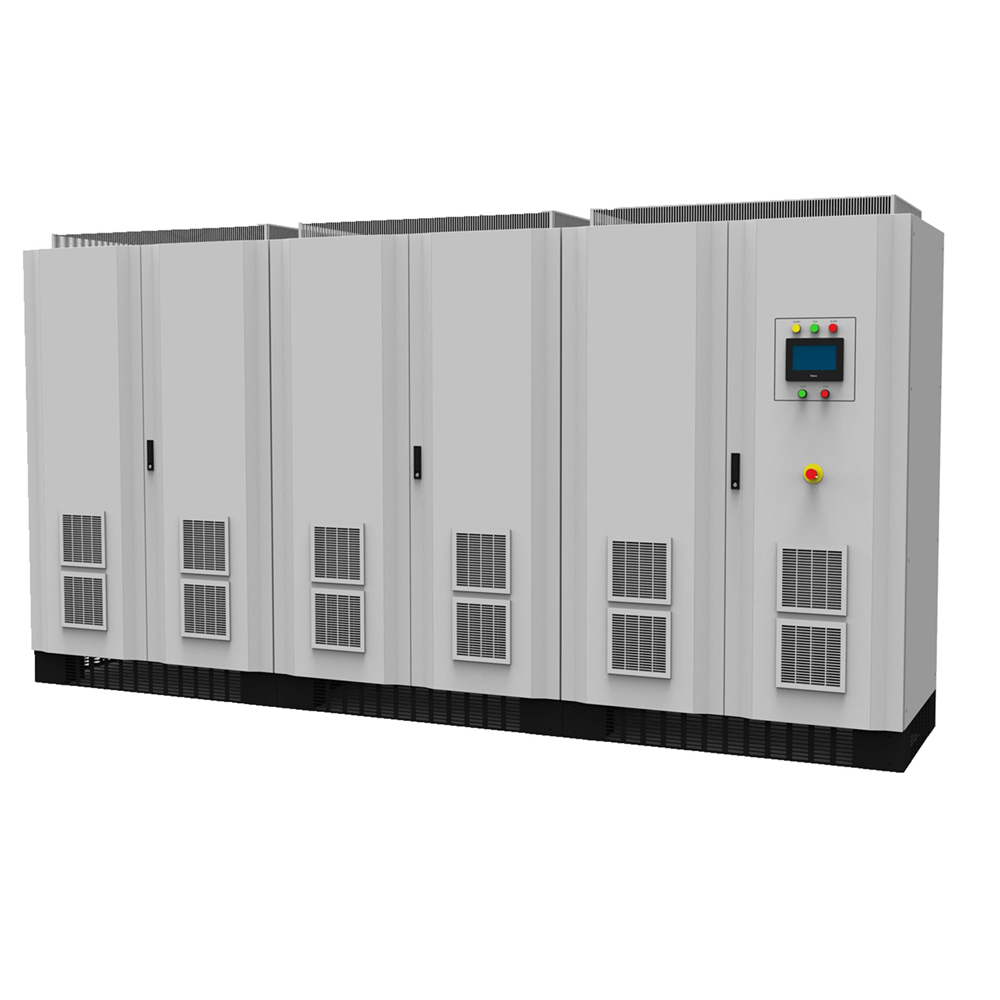The MTP series DC Power Supplies are High Power DC power supplies developed by iDealTek-Electronics based on IGBT semiconductor components, adopting AC/DC power processing topology with full-bridge phase-shift soft-switching technology. This series of High-power DC power supplies have the most output models and the widest output range in the company's DC power supply series, from 3KW ~ 30KW integrated in 19-inch standard rack-mounted high-precision DC power supplies to 45KW ~ 2000KW with casters or floor-standing Cabinet type High Power DC power supplies, output voltage up to 2000VDC, output current up to 6000A.
High-power DC Power Supplies, High Power AC - DC Supplies, High-power Switching Power Supplies, High-power AC DC Supplies, High-power Power Supplies Yangzhou IdealTek Electronics Co., Ltd. , https://www.idealtekpower.com

This series of High-power AC - DC power supplies are equipped with a reliable two-stage conversion mechanism drive logic circuit and a fast control loop optimized by iDealTek-Electronics. Which balances the requirements of low output ripple and fast DC output response speed, making this series of High-power switching power supplies can provide high-precision, low ripple, high-stability and High-power DC output with fast response speed feature of the switching power supply. All MTP series DC power supplies are equipped with a short-term 2 times rated current overload capacity (Except for some high-current output models) to cope with the inductive and mixed load's demand for high-current output at the moment of starting.
The full range of MTP series high-power DC power supply adopts digital control circuit. You can set and control the power output through the buttons on the front panel of the power supply (3KW ~ 30KW) or LCD touch screen (45KW ~ 2000KW). The high-precision 4 1/2-digit LED (3KW ~ 30KW) or LCD (45KW ~ 2000KW) provides intuitive, high-precision output display and measurement functions. At the same time, the full range of MTP high-power DC power supplies are equipped with RS485 interfaces as standard, following the MODBUS-RTU international communication protocol, which can realize remote control and operating status monitoring of the power supplies.
At present, this series of High Power DC power supplies are mainly used in Battery charging testing, DC motor testing, Photovoltaic inverter testing, and various cutting-edge applications that require High-power DC output.
The Industrial Internet takes off then what exactly does it look like?
Just after the "Double 11" shopping festival, China's two major players in the consumer internet—Alibaba and JD.com—set new records for transactions. Meanwhile, the industrial internet, which complements the consumer sector, is also gaining momentum. Recently, the State Council held a meeting where it approved the "Guiding Opinions on Deepening the 'Internet + Advanced Manufacturing' to Develop the Industrial Internet." This policy aims to further integrate manufacturing with the internet, enabling smarter, more connected industrial operations. But what exactly is the "net" in the industrial internet? And how can the integration of "manufacturing" and "internet" be deepened?
The industrial internet refers to an open, global network that connects people, data, and machines. It belongs to the broader internet domain and represents a highly integrated global industrial system that combines advanced computing, analytics, and sensing technologies with the internet. Essentially, it’s the convergence of global industrial systems with cutting-edge digital tools. This technology links smart machines, connects humans and computers, merges software with big data analytics, reshapes industries globally, boosts productivity, and makes the world better, faster, safer, cleaner, and more efficient.
So, what is the core of the industrial internet? The first key aspect is full connectivity. Through comprehensive interconnection, data flows and analysis lead to intelligent transformations and new business models. Connectivity is the foundation, as the industrial internet links various elements of the industrial system—machines, people, and systems.
This connectivity enables communication and, more importantly, end-to-end data flow across systems and thorough data analysis and modeling. According to Burt, intelligent production, networked collaboration, personalized customization, and service expansion all depend on this connectivity, creating new models through data-driven insights.
Unlike the traditional internet, the industrial internet emphasizes data flow and integration even more. It focuses on analyzing and modeling data to drive innovation and efficiency. This distinction highlights the industrial internet's essence: leveraging data to transform how industries operate.
The growth of the industrial internet ecosystem relies heavily on platforms like GE’s Predix and Predix.io. Predix is GE’s operating system for the industrial internet, while Predix.io allows third-party developers to build, deploy, and expand industrial applications securely and reliably.
By 2025, China aims to complete a basic industrial internet infrastructure covering all regions and industries, improve its analytics systems, and establish several internationally competitive platforms. By 2035, China should lead globally in specific industrial fields, and by the middle of the century, its industrial internet will be among the world's strongest. According to Chen Xiongxiong, Deputy Minister of Industry and Information Technology, these goals align with China’s broader economic and social development plans.
In 2009, Li Bohu, an academician of the Chinese Academy of Engineering, introduced the concept of “cloud manufacturing,†reflecting the internet characteristics of the industrial internet. Under this model, companies collaborate dynamically based on real-time needs. Through the internet, they find suitable partners for each task, forming temporary but efficient relationships. This cloud manufacturing model represents an evolution of smart and collaborative manufacturing, already being tested internally by some companies.
Just as the internet simplifies daily life, it also brings benefits to industrial companies by offering supply-demand matching, information sharing, and support along the industrial chain. It enables companies to find suitable suppliers, access services like design, manufacturing, and investment, all in a more transparent and open environment.
Today, the global industrial internet landscape is becoming more diverse, with Germany and the U.S. leading the way through strong collaborations. Countries like China, Japan, and France are actively catching up. An Zhenpeng, deputy director of the Ministry of Industry and Information Technology, noted that whether China’s consumer internet advantages can transition smoothly to the industrial internet and foster world-class platforms remains to be seen. This will test whether Chinese consumers and entrepreneurs are ready to embrace this transformation.